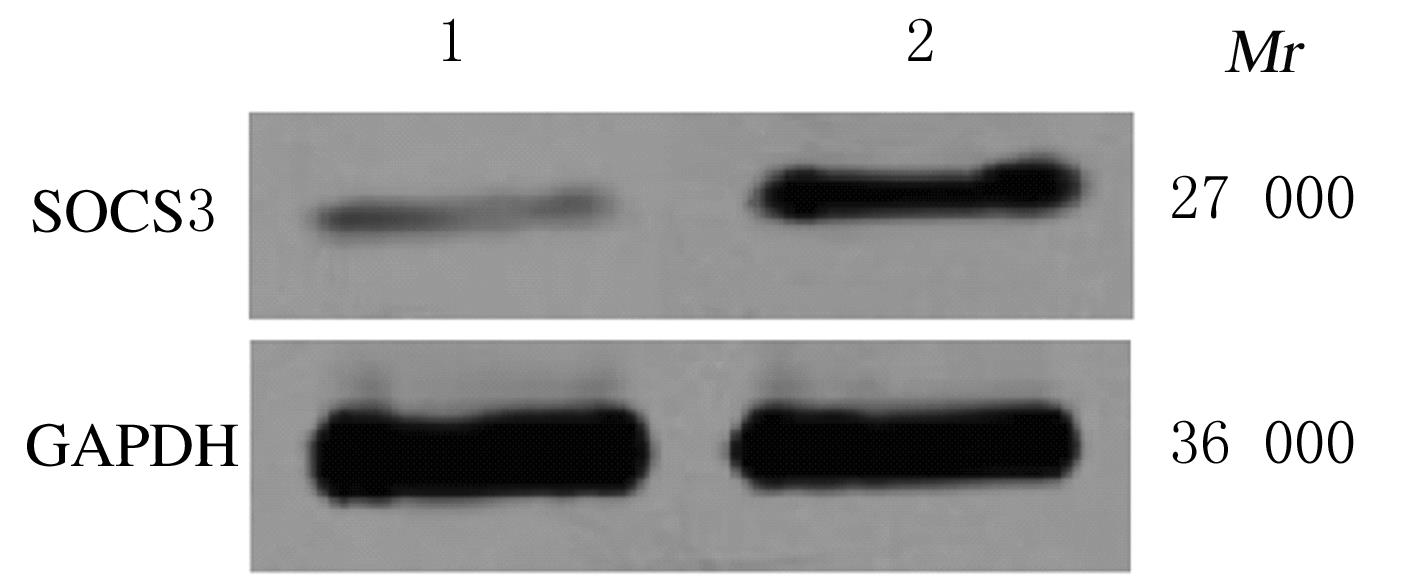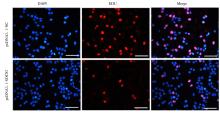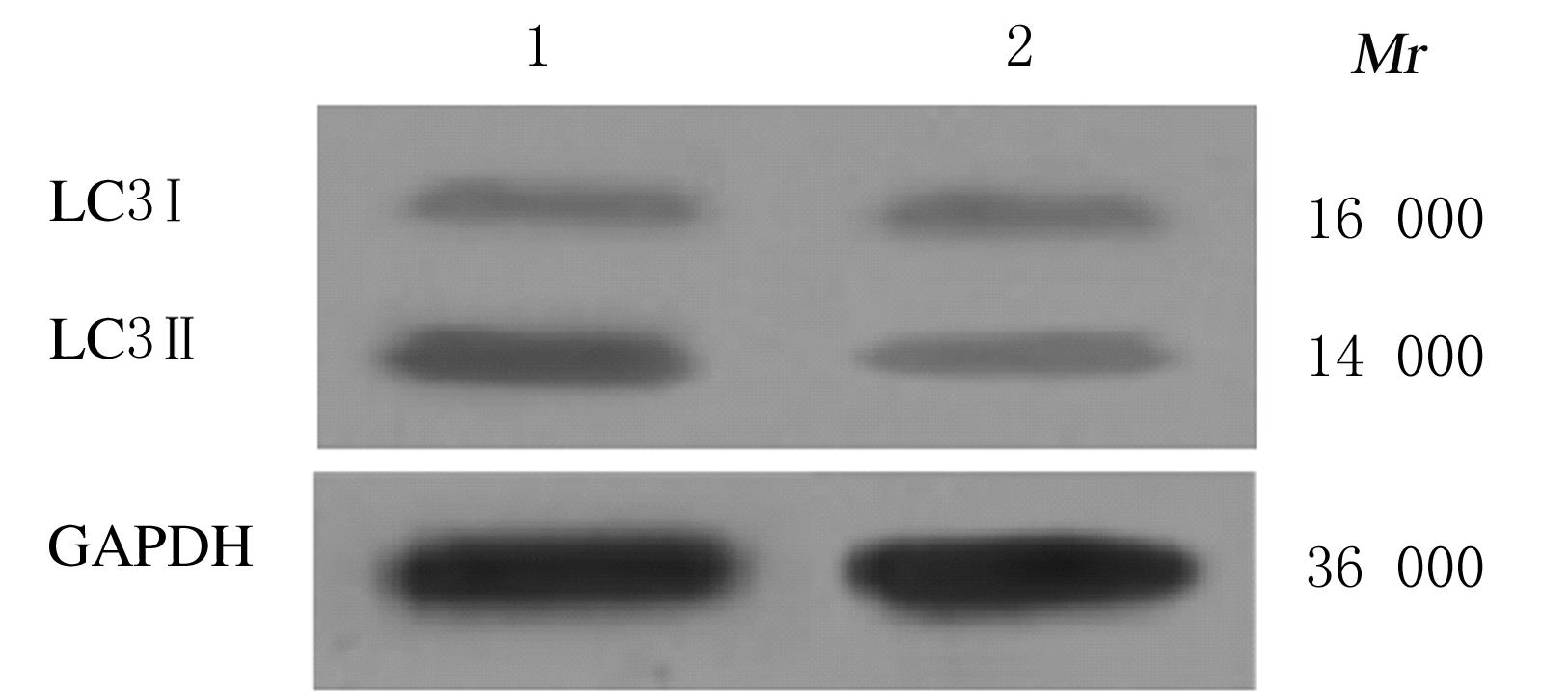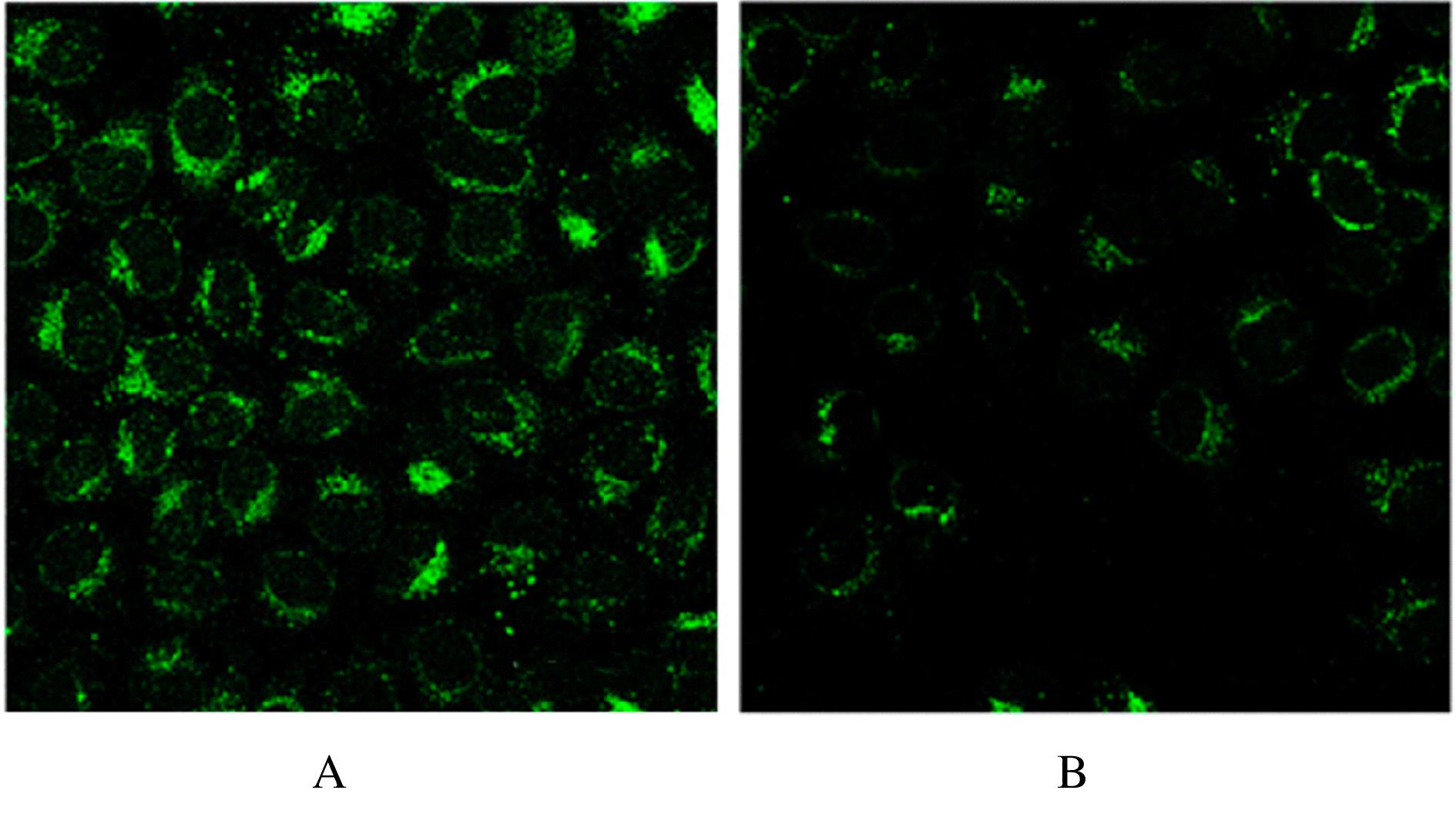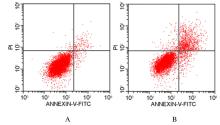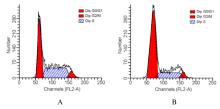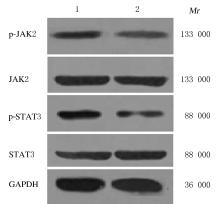Journal of Jilin University(Medicine Edition) ›› 2022, Vol. 48 ›› Issue (1): 172-179.doi: 10.13481/j.1671-587X.20220121
• Research in clinical medicine • Previous Articles Next Articles
Expression of SOCS3 in peripheral blood mononuclear cells of patients with diffuse large B-cell lymphoma and its effect on autophagy and apoptosis of OCI-LY7 cells
- Department of Hematology,National Drug Clinical Trial Institution,First Affiliated Hospital,Nanchang University,Nanchang 330006,China
-
Received:2021-02-21Online:2022-01-28Published:2022-01-17 -
Contact:Pu LI E-mail:13970998685@163.com
CLC Number:
- R733
Cite this article
Wenxiong SUN,Pu LI. Expression of SOCS3 in peripheral blood mononuclear cells of patients with diffuse large B-cell lymphoma and its effect on autophagy and apoptosis of OCI-LY7 cells[J].Journal of Jilin University(Medicine Edition), 2022, 48(1): 172-179.
share this article
| 1 | SIEGEL R L, MILLER K D, JEMAL A. Cancer statistics, 2019[J]. CA A Cancer J Clin, 2019, 69(1): 7-34. |
| 2 | RODGERS T D, BARAN A M, REAGAN P M,et al. Outcomes of lenalidomide in diffuse large B-cell (DLBCL) and high-grade NHL (HGBCL): a single-center retrospective analysis[J]. J Clin Oncol, 2019, 37(15 ): 7547. |
| 3 | PASVOLSKY O, ROZENTAL A, RAANANI P,et al. R-CHOP compared to R-CHOP + X for newly diagnosed diffuse large B-cell lymphoma: a systematic review and meta-analysis[J]. Acta Oncol, 2021, 60(6): 744-749. |
| 4 | GISSELBRECHT C, GLASS B, MOUNIER N,et al. Salvage regimens with autologous transplantation for relapsed large B-cell lymphoma in the rituximab era[J]. J Clin Oncol, 2010, 28(27): 4184-4190. |
| 5 | LIN X M, CHEN H, ZHAN X L. MiR-203 regulates JAK-STAT pathway in affecting pancreatic cancer cells proliferation and apoptosis by targeting SOCS3[J]. Eur Rev Med Pharmacol Sci, 2019, 23(16): 6906-6913. |
| 6 | WANG J, GUO J, FAN H. MiR-155 regulates the proliferation and apoptosis of pancreatic cancer cells through targeting SOCS3[J]. Eur Rev Med Pharmacol Sci, 2020, 24(24): 12625. |
| 7 | SHANG A Q, WU J, BI F, et al. Relationship between HER2 and JAK/STAT-SOCS3 signaling pathway and clinicopathological features and prognosis of ovarian cancer[J]. Cancer Biol Ther, 2017, 18(5): 314-322. |
| 8 | ORTIZ-MUÑOZ G, MARTIN-VENTURA J L, HERNANDEZ-VARGAS P, et al. Suppressors of cytokine signaling modulate JAK/STAT-mediated cell responses during atherosclerosis[J]. Arterioscler Thromb Vasc Biol, 2009, 29(4): 525-531. |
| 9 | 汪太松, 乔文礼, 邢 岩, 等. 弥漫性大B细胞淋巴瘤预后因素研究进展[J]. 国际放射医学核医学杂志, 2020(3): 182-188. |
| 10 | LI L J, CHAI Y, GUO X J, et al. The effects of the long non-coding RNA MALAT-1 regulated autophagy-related signaling pathway on chemotherapy resistance in diffuse large B-cell lymphoma[J]. Biomed Pharmacother, 2017, 89: 939-948. |
| 11 | YOUNES A, THIEBLEMONT C, MORSCHHAUSER F, et al. Combination of ibrutinib with rituximab, cyclophosphamide, doxorubicin, vincristine, and prednisone (R-CHOP) for treatment-naive patients with CD20-positive B-cell non-Hodgkin lymphoma: a non-randomised, phase 1b study[J]. Lancet Oncol, 2014, 15(9): 1019-1026. |
| 12 | XU J, KE Y, ZHANG Y, et al. Role of prophylactic radiotherapy in Chinese patients with primary testicular diffuse large B-cell lymphoma: a single retrospective study[J]. J BUON, 2019, 24(2):754-762. |
| 13 | LI S Y, YOUNG K H, MEDEIROS L J. Diffuse large B-cell lymphoma[J]. Pathology, 2018, 50(1): 74-87. |
| 14 | LIU H, FENG XD, YANG B, et al. Dimethyl fumarate suppresses hepatocellular carcinoma progression via activating SOCS3/JAK1/STAT3 signaling pathway[J]. Am J Transl Res, 2019, 11(8):4713-4725. |
| 15 | PIAO L, PARK J, LI Y, et al. SOCS3 and SOCS6 are required for the risperidone- mediated inhibition of insulin and leptin signaling in neuroblastoma cells[J]. Int J Mol Med, 2014, 33(5):1364-1370. |
| 16 | CHU Q, SHEN D, HE L, et al. Prognostic significance of SOCS3 and its biological function in colorectal cancer[J]. Gene, 2017, 627: 114-122. |
| 17 | LI Y J, LEI Y H, YAO N, et al. Autophagy and multidrug resistance in cancer[J]. Chin J Cancer, 2017, 36(1): 52. |
| 18 | ZHU H, GAN X, JIANG X, et al. ALKBH5 inhibited autophagy of epithelial ovarian cancer through miR-7 and BCL-2[J]. J Exp Clin Cancer Res, 2019, 38(1): 163. |
| 19 | HUANG W, ZENG C, HU S B, et al. ATG3, a target of miR-431-5p, promotes proliferation and invasion of colon cancer via promoting autophagy[J]. Cancer Manag Res, 2019, 11: 10275-10285. |
| 20 | 赵博欣, 张志勇, 黄立娟. MiR-let-7在细胞凋亡过程中作用的研究进展[J]. 国际免疫学杂志,2020, 43(1):109-112. |
| 21 | CAO R, MENG Z, LIU T, et al. Decreased TRPM7 inhibits activities and induces apoptosis of bladder cancer cells via ERK1/2 pathway[J].Oncotarget, 2016,7(45): 72941-72960. |
| 22 | LI H C, XIA Z H, CHEN Y F, et al. Cantharidin inhibits the growth of triple-negative breast cancer cells by suppressing autophagy and inducing apoptosis in vitro and in vivo [J]. Cell Physiol Biochem, 2017, 43(5): 1829-1840. |
| 23 | 张晓慧, 罗建民, 杨 琳, 等. SOCS1基因对JAK2/STAT通路介导的急性髓系白血病细胞生长抑制的作用[J]. 中国实验血液学杂志, 2020, 28(5): 1496-1503. |
| 24 | 彭玉娟,游 晶,李 静,等.JAK/STAT/SOCS信号通路在HBV相关肝脏疾病中的作用[J]. 临床肝胆病杂志,2021,37(6): 1435-1439. |
| 25 | LI M, ZHENG R, YUAN F L. MiR-410 affects the proliferation and apoptosis of lung cancer A549 cells through regulation of SOCS3/JAK-STAT signaling pathway[J].Eur Rev Med Pharmacol Sci, 2018, 22(18):5987-5993. |
| [1] | Qingxu LANG,Xueshuang NIU,Kaiwen YANG,Ren ZHANG,Siteng WANG, ZUMIRETIGULI·Wumaier,Zhenqi WANG. Effects of sodium butyrate combined with ionizing radiation on apoptosis of lung cancer A549 cells and its mechanism [J]. Journal of Jilin University(Medicine Edition), 2022, 48(4): 915-921. |
| [2] | Wentao WANG,Xuguang MI,Yang ZHOU,Wenxing PU,Jiaxu GAO,Meng JING,Fankai MENG. Effect of autophagy induced by exosomes derived from bone marrow mesenchymal stem cells on survival of SH-SY5Y cells inhibited by MPP+ and its mechanism [J]. Journal of Jilin University(Medicine Edition), 2022, 48(3): 606-614. |
| [3] | Guanhu LI,Qingxu LANG,Chunyan LIU,Qin LIU,Mengrou GENG,Xiaoqian LI,Zhenqi WANG. Inhibitory effect of valproic acid combined with X-ray irradiation on proliferation of breast cancer MDA-MB-231 cells and its mechanism [J]. Journal of Jilin University(Medicine Edition), 2022, 48(3): 622-629. |
| [4] | Qiuting CAO,Jingchun HAN,Xiaofei ZHANG. Effect of silencing helicase BLM gene on chemotherapy sensitivity of irinotecan in colorectal cancer cells and its mechanism [J]. Journal of Jilin University(Medicine Edition), 2022, 48(3): 657-667. |
| [5] | Cuilan LIU,Fengai HU,Jing LIU,Dan WANG,Changyun QIU,Dunjiang LIU,Di ZHAO. Effect of adiponectin receptor agonist AdiopRon on biological behaviors of glioma cells and its mechanism [J]. Journal of Jilin University(Medicine Edition), 2022, 48(3): 702-710. |
| [6] | Ming xing YANG,Wen DONG,Ji LI. Inductive effect of peiminine on apoptosis of lung cancer A549 cells and its mechanism [J]. Journal of Jilin University(Medicine Edition), 2022, 48(3): 711-717. |
| [7] | Ming LI,Qiuting WANG,Shan CHEN,Huifang SHI. Improvement effect of p38 MAPK inhibitor on chronic obstructive pulmonary disease injury in mice through inhibiting cell pyrotosis mediated by NLRP3 pathway [J]. Journal of Jilin University(Medicine Edition), 2022, 48(3): 744-754. |
| [8] | Yabo MA,Xiaotan YUAN,Xianguo XIE,Xinfeng LIU,Jinrui XU,Yi YANG. Expression levels of Wnt5a protein in ovary tissue of mice at different development stages and its effect on oocyte autophagy [J]. Journal of Jilin University(Medicine Edition), 2022, 48(2): 277-283. |
| [9] | Ying DONG,Jianyu GUO,Siyi WANG,Dan GUO,Like WANG,Xu WEN,Lifeng LIU,Meng QU,Chunyan YU,Nannan LIU,Dan WANG,Changjie CHEN. Effect of endoplasmic reticulum stress PERK-eIF2α-ATF4 signaling pathway on delaying transplanted tumor growth in APP/PS1 mice [J]. Journal of Jilin University(Medicine Edition), 2022, 48(2): 324-330. |
| [10] | Yang ZHOU,Xuguang MI,Wenxing PU,Wentao WANG,Meng JING,Fankai MENG. Ameliorative effect of melatonin on oxidative stress of human neuroblastoma SHSY5Y cells induced by hydrogen peroxide and its mechanism [J]. Journal of Jilin University(Medicine Edition), 2022, 48(2): 340-347. |
| [11] | Suxian CHEN,Zehui GU,Yangfei MA,Qi TAN,Qi LI,Yadi WANG. Promotion effect of rutin on apoptosis of human colon cancer SW480 cells and its mechanism [J]. Journal of Jilin University(Medicine Edition), 2022, 48(2): 356-363. |
| [12] | Zhihui ZHAO,Xianghua BAI,Jinling HE,Weiqin DUAN,Min LIU,Shengmao ZHANG. Inhibitory effect of sufentanil on apoptosis of myocardial cells in myocardial ischemia-reperfusion injury rats and its mechanism [J]. Journal of Jilin University(Medicine Edition), 2022, 48(2): 364-373. |
| [13] | Guangsong XU,Haibing JIANG,Jing PAN,Guoqing LI. Inhibitory effects of betulinic acid on migration and invasion of gastric cancer MGC-803 cells and their mechanisms [J]. Journal of Jilin University(Medicine Edition), 2022, 48(1): 122-128. |
| [14] | Yanmin SUN,Junpan HU,Bingyu WANG,Jinying FU. Therapeutic effect of alpinetin in letrozole-induced polycystic ovary syndrome model rats and its mechanism [J]. Journal of Jilin University(Medicine Edition), 2022, 48(1): 129-135. |
| [15] | Leihua CUI,Yubo HOU,Chang SU,Minghe LI,Xin NIE. Effect of N-acetylcysteine on apoptosis of MC3T3-E1 cells induced by nicotine and its mechanism [J]. Journal of Jilin University(Medicine Edition), 2022, 48(1): 26-32. |


